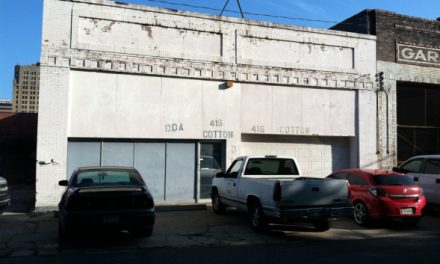In the sometimes hoitey-toitey world of historic preservation, “Adaptive Reuse” is tossed about like so many festival Frisbees. It pretty much means what it says…an old building is adapted to another current use to make it useful again.

Ogilvie Hardware pre-rehab. Welcoming, isn’t it?
As cool and unique as historic buildings are, they are of little use sitting vacant. Too many communities are dealing with too many buildings that are creating problems instead of opportunities, and are costing the local municipality money to police, board up and take far-away owners to court because of shoddy or nonexistent maintenance. For 12 years, the Ogilvie Hardware building fell into this category downtown. (P.S. Ogilvie is pronounced O’GILvey).
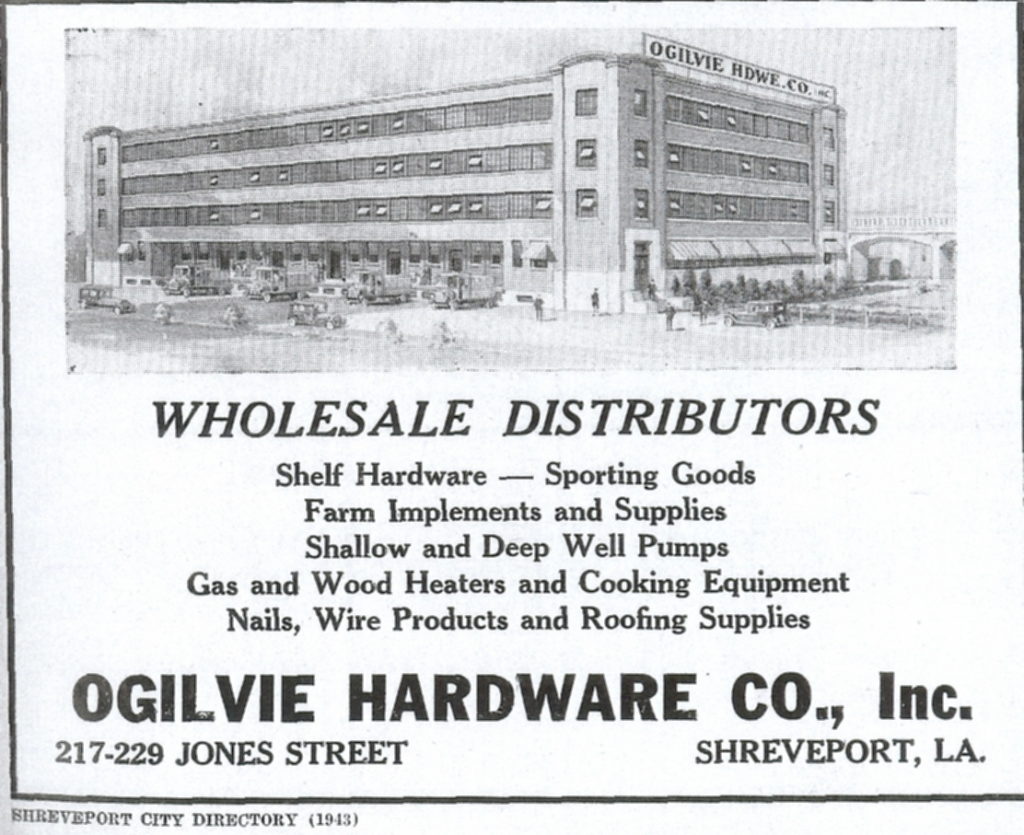
The wholesaler’s days became numbered when the Mom-and-Pop stores that were its stock in trade began disappearing. The Wal-Marts, Lowe’s and Home Depots had no need for Ogilvie’s hardware goods, and the small local businesses that did were soon overwhelmed by the big box stores’ acres of items and lower prices. In November 1999, Bert Ogilvie locked the door to the 91,000 square foot hardware company in the 200 block of Jones Street one last time. After two consecutive money-losing years, the 72-year history of the Ogilvie Hardware Company came to a sad and very quiet end.
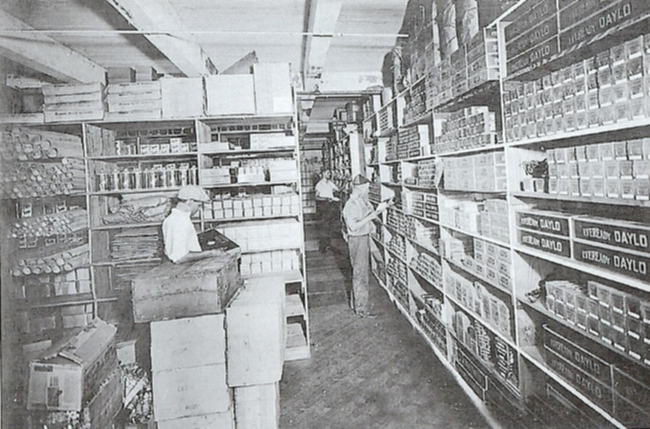
When Ogilvie was blowing and going.
Those 72 years were something else indeed. When the Thomas-Ogilvie Hardware Company building opened at its current location in 1927, it was a cutting edge warehouse boasting of elevators, telephones in every department, and an almost unheard-of sprinkler system. Construction cost the princely sum of $210,000 in an era when a pound of ham cost 3 cents, a loaf of bread 9 cents, a lawnmower, $8.75. Shreveport was on the grow and downtown was booming.
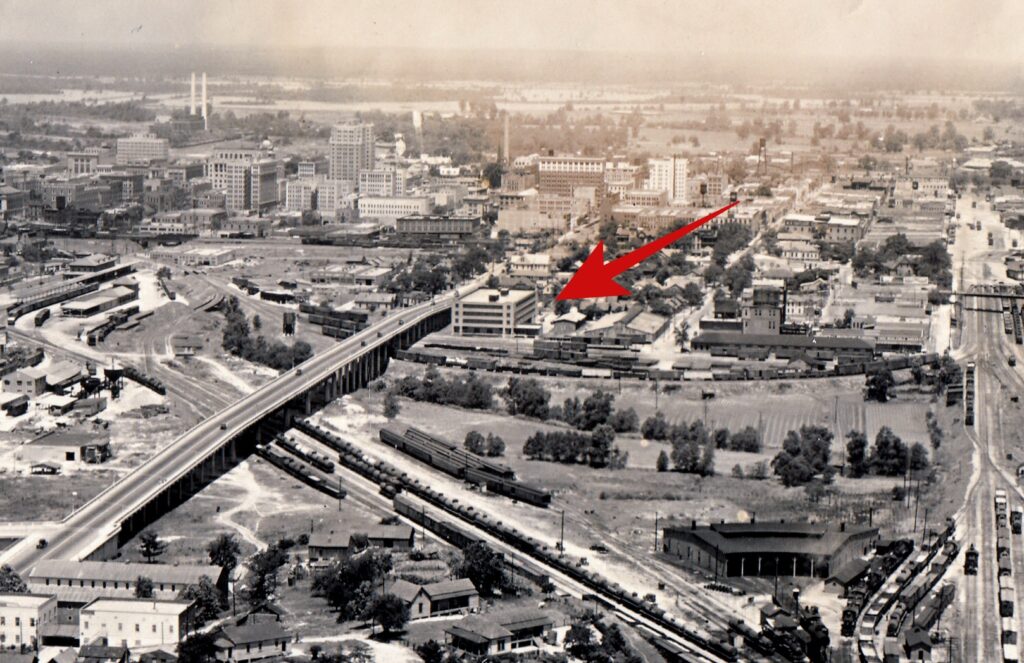
Development all around Ogilvie.
The hardware warehouse, which sat on the site of the company’s old mule barn, was surrounded by other businesses and a number of homes. The Blalock-Knighton Wholesale Produce sat just to the east and trains ran up and down the tracks just behind the building.
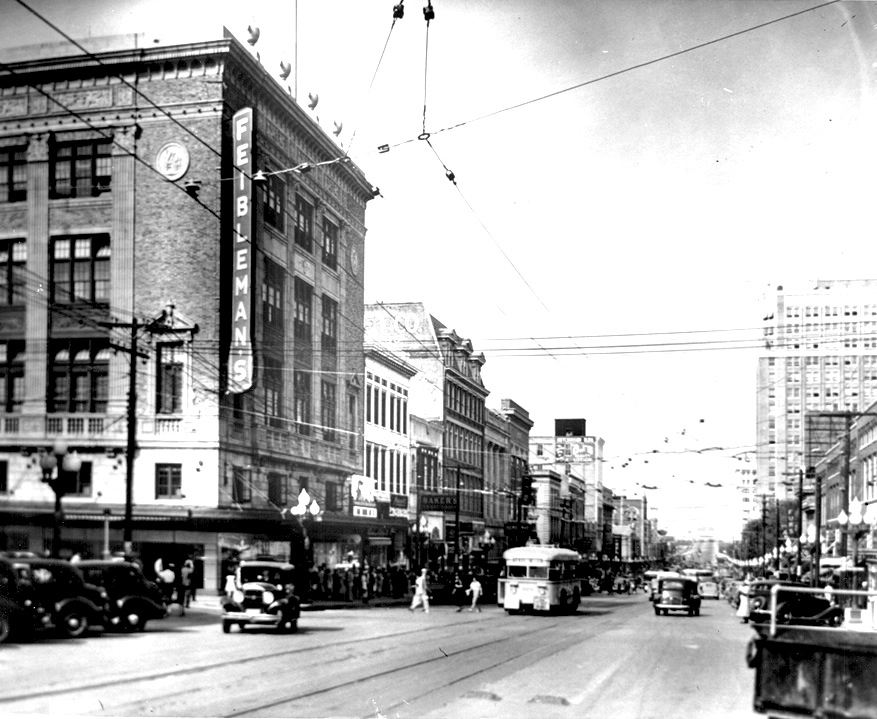
Downtown in the Golden Age.
Elsewhere downtown, the 1920s was proving to be a Golden Age of downtown building and major projects such as the Lane and Slattery Buildings, the Fiebleman’s/Sears building, the YMCA, the Municipal Auditorium, the Arlington Hotel and others were completed by tycoons made wealthy on the railroads and black gold.

Hughes Tool was downtown in the 1930s and 40s.
H.L. Hunt and Howard Hughes, Sr., were making their first fortunes in Shreveport, oil was flowing in north Caddo Parish, the railroads were rolling and resident needed all the goods found at Thomas-Ogilvie— things like dynamite, hardware and plumbing supplies, bicycles, ammunition and sporting goods. In 1948 when patriarch Russell Ogilvie passed away, son Buck returned to Shreveport to take over a thriving family business that became even busier in the aftermath of WWII.

Buck and Carolyn Ogilvie
Buck and wife Carolyn would tend to Ogilvie for the next 38 years. The job was far from idyllic. Buck’s most vivid memories involve his worrying every Sunday night about what Monday would bring. “With 55 employees, you always knew one wouldn’t show up or another would have a crisis.” Buck never really intended to manage a hardware company. He graduated from college in 1938 with a degree in chemical engineering and went to Texas to seek his fortune in the oil business. When his father died, he was called back home to become Ogilvie Generation #2.
Most of his memories of the old place are happy ones, until that fateful day in 1981 that he remembers so well. It was the day the company’s first computer arrived, a day he remembers like it was yesterday. “It was my biggest headache,” he says. “We had to come in every Sunday just to get caught up on the computer.” Buck’s computer is long gone, but soon, others will replace it in the hardware’s 90-open concept loft apartments. In March 2011, Provident Realty Advisors from Dallas, Tex., happened to see the Ogilvie Building posted on the Internet, decided to check it out and quickly realized it would be a good fit for residential. It had the land, it had the interior space, and it had the historic and architectural lineage to be ‘re-adapted’ into something completely and totally different- upscale living spaces.
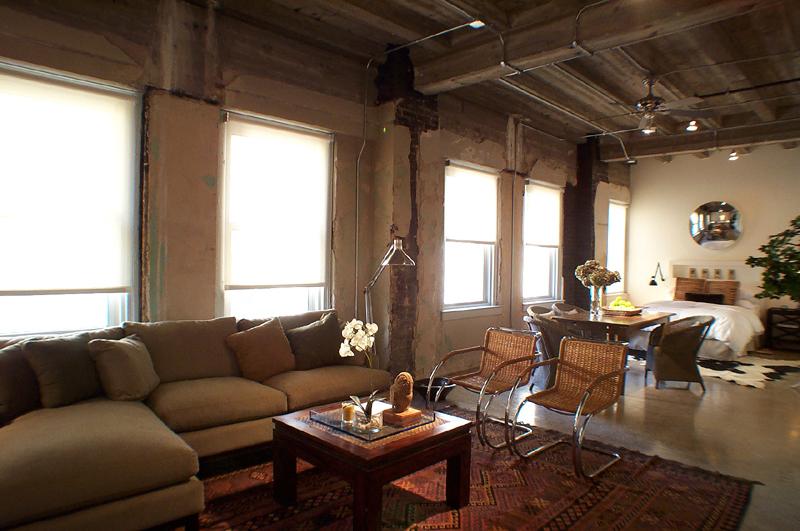
The new look of an old hardware warehouse.
Provident began their work and created a package of amenities to include high ceilings, granite countertops, upstyle appliances, washers and dryers in each unit, a well-appointed community room, fitness room, business center, salt water pool, playground, fenced parking—all available as affordable workforce housing. Creative use of Louisiana Housing Finance funding, state and federal historic tax credits, green energy credits (the building is LEED Gold-certified) and private equity gave Provident the money to green light construction.

Ogilvie Apartment Interior
Provident was careful to respect the historic integrity of the building and took pains to strip dozens of wide-plank shelving units to use as wainscoting in apartments, moved delicate clay tiles to focal points on the first floor, and removed only offensive graffiti from giant concrete posts which themselves are worked into the decor of the interiors of the units. The work and the care that went into the work was almost overwhelming to Ogilvies Buck and Carolyn, Bert and Jamie, Russell and various daughters and sons, nieces and nephews taking a private tour before the grand opening.

The official ribbon-cutting.
“Amazing.” “Breath-taking.” “Unbelievable,” was repeated over and over as the Ogilvie family moved through the common areas and from apartment to apartment. “We’re so impressed with the job they (Provident Realty) did,” said Bert. “I want to live here!” said Jamie. “I’m just so glad they kept the name,” repeated Buck. Buck will be happy to know that changing the name was never, ever an option. Ogilvie Hardware Company was a Shreveport landmark, and now, Ogilvie Hardware Lofts will carry on. Adaptive? Check. Reuse? Double Check. A beautiful building gets a second chance and downtown Shreveport wins because of it.
If you are interested in other historic buildings that can be adaptively reused, check out the Real Estate section here on our website.
Want to know more about Historic (Commercial) Tax Credits and information about rehab downtown? That information is right here.



